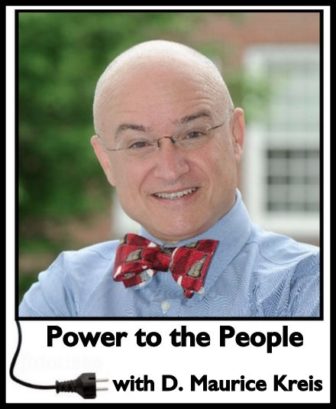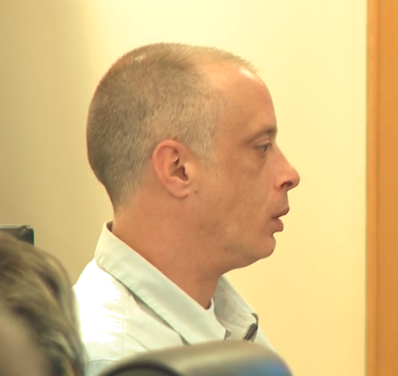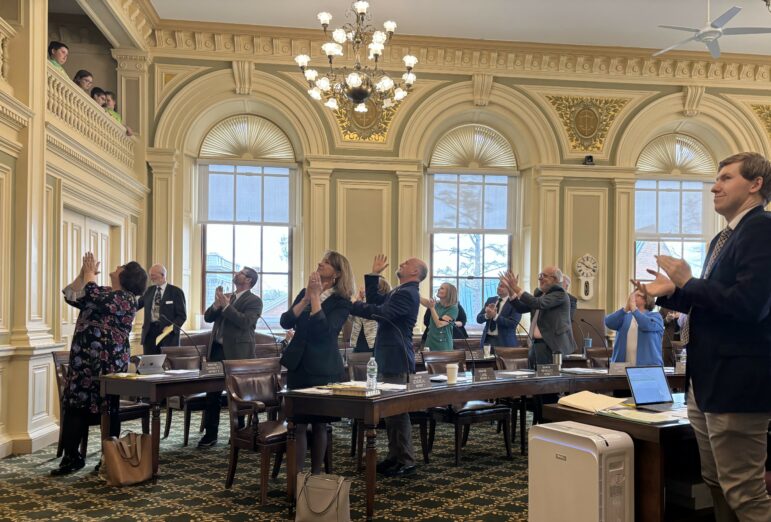Power to the People is a column by D. Maurice Kreis, New Hampshire’s Consumer Advocate. Kreis and his staff of four represent the interests of residential utility customers before the NH Public Utilities Commission and elsewhere. It is co-published by Manchester Ink Link and InDepthNH.org.
By D. Maurice Kreis, Power to the People
We interrupt the endless argument about net metering in New Hampshire to bring you an important public service announcement. Energy efficiency is in trouble.
Residential utility customers who like photovoltaic panels have very little at stake in the fight over whether to raise the upper limit on net-metered solar arrays from 1 megawatt to 4.99 megawatts. Those are utility-scale systems, not to be found in backyards or home rooftops.
However, residential utility customers have a lot on the line if New Hampshire starts to march backwards on energy efficiency. Don’t take my word for it – consider what the 2018 update to the state’s Ten-Year Energy Strategy had to say.
“Energy efficiency is the cheapest and cleanest energy resource,” the document proclaimed. “New Hampshire should prioritize capturing cost-effective energy efficiency in all sectors, including buildings, manufacturing and transportation.”
Literally at the same moment that Governor Sununu was vetoing the latest effort to raise the net metering cap, the Energy Efficiency Resource Standard (EERS) Committee of the state’s Energy Efficiency and Sustainable Energy (EESE) Board was debating the future of New Hampshire’s ratepayer-funded energy efficiency programs.
Yeah, I get it. “EERS Committee of the EESE Board” sounds like bureaucracy at its most stultifying – about as compelling as the Ministry of Silly Walks of Monty Python fame. But it is at this forum that the state’s electric and natural gas utilities, which administer our ratepayer-funded energy efficiency programs, are supposed to reach agreement on a plan for energy efficiency covering 2021-2023 that can be submitted to the Public Utilities Commission (PUC) for approval.
So far, it’s not happening.
On behalf of residential ratepayers, we are pressing for a more vigorous commitment to the EERS holy grail of “all cost-effective energy efficiency.” By 2023, we want to see energy savings equal to 2 percent of the electric utilities’ annual sales and 1 percent of the natural gas utilities’ annual sales.
That would still put New Hampshire well behind Massachusetts, which is the nation’s top state for energy efficiency, according to the American Council for an Energy Efficient Economy.
The utilities claim a more modest program – achieving 1.7 percent electric savings in 2023 and 0.87 percent for natural gas – would still require budget increases of 35 percent a year. The Staff of the PUC called increases of that magnitude “alarming.”
Now the utilities are talking about annual budget increases of just 11 percent – which would be a major step backward.
Given that any boosts to the energy efficiency budget are passed directly through to everyone’s utility bills, you might be wondering why the state’s ratepayer advocate is such a fan of big budget increases. The answer is simple.
Energy efficiency saves ratepayers money overall. How do we know this?
Our ratepayer-funded energy efficiency programs must survive a rigorous cost-benefit analysis under the newly developed and PUC-approved screening protocol known as the Granite State Test. In essence, we’ve ditched the touchy-feely stuff about the societal benefits of energy efficiency and focused on the costs and benefits to all ratepayers.
In these circumstances, there is simply no reason to avoid pushing the EERS as far as it can go. Yeah, the energy efficiency charges on our electric and natural gas bills will go up, but we will still save money on our utility bills overall.
So, this is the point at which the utilities should be stepping forward, as the administrators of our energy efficiency programs, to explain to the public why there is nothing alarming about “all cost-effective energy efficiency.” But they don’t do it.
Particularly at the State House, New Hampshire’s utilities are chronically unwilling to expend an ounce of their political capital on defending the energy efficiency programs they are paid handsomely, through shareholder incentives and lost-revenue recovery, to deliver under the “NH Saves” brand name.
They are happy to use the money they collect in energy efficiency charges to promote their own brands by tying them to the “NH Saves” logo. But the utilities never oppose bills that limit the ability of the PUC to approve energy efficiency charges. Their silence at the State House is thunderous.
It also leaves unanswered certain critical questions to which the utilities are uniquely qualified to respond. Here’s one, posed last year by economist Kenneth Costello of the Cato Institute, a well-respected libertarian think tank: “Is it equitable and good public policy to compel utility customers to pay for EE initiatives?”
“Many of these initiatives benefit only a relatively few customers, most of whom can afford to pay for higher EE without any financial assistance,” Costello added. “Besides, these consumers are quite capable of making rational decisions, just like they do when they invest in other activities. So, why should utilities offer these customers subsidies and why should other customers bear the costs?”
The answer is simple: Without those subsidies and inducements, energy efficiency just doesn’t happen – and all of us bear the resulting costs. To those who want to live in a world where all consumers always behave rationally, I can only point out that the perfect should not become the enemy of the good.
In his article, Costello blasts Rocky Mountain Institute founder Amory Lovins for calling energy efficiency “the lunch you get paid to eat.”
“These free lunches seem suspicious to me,” Costello mused. “If these efforts are such a bargain, then why must government mandate them and utilities push for them?”
In response, consider the only time Lovins has appeared at the New Hampshire Public Utilities Commission. It was 1985 and, I am proud to say, Lovins had been hired by the Office of the Consumer Advocate to testify against a plan by Public Service Company of New Hampshire to borrow a pile of additional money to finance the Seabrook nuclear power plant.
That, of course, would be the project that in 1988 made PSNH the first U.S. electric utility to declare bankruptcy since the Great Depression.
Three years before bankruptcy blast-off, Lovins told the PUC that (as summarized by the agency itself) “sufficient potential negawatts exist to offset the need for Seabrook Unit 1 and that they can be developed for a cost low enough to allow PSNH to recover both the cost of developing negawatts and the sunk cost of Seabrook Unit 1 at rates which would be less than the incremental cost of completing Seabrook Unit 1.”
The PUC blew him off.
“We find that Mr. Lovins’ proposal is not to be preferred over the continued construction of Seabrook Unit 1,” the regulators ruled. “The difficulty we have with Mr. Lovins’ analysis is that it is dependent on new technologies which have not been proven in the marketplace and because we do not believe that sufficient conservation capacity will be developed to meet the needs of the company in the early 1990s.”
If only the PUC had listened to Amory Lovins then. A failure to listen to him now would truly be alarming — and more consequential than failing to expand net metering.





